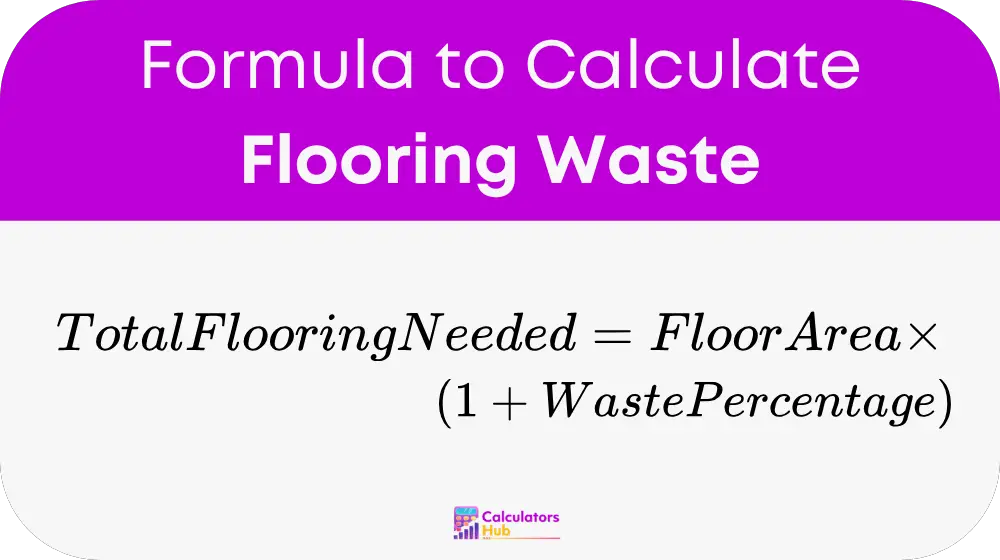The Flooring Waste Calculator helps homeowners, contractors, interior designers, and flooring installers estimate how much extra flooring material is needed to account for cutting, trimming, pattern matching, and unforeseen layout adjustments. When flooring is installed—whether it’s tile, hardwood, laminate, vinyl, or carpet—some material is always lost due to waste during fitting and cutting.
This calculator adds a specific waste percentage to the net floor area to ensure enough material is ordered, preventing project delays and additional purchase costs. It is especially valuable for irregular-shaped rooms, diagonal patterns, or when installing materials that are difficult to align without waste.
This tool is part of the home improvement and remodeling estimation calculator category, making it a crucial planning tool in residential and commercial flooring projects.
formula of Flooring Waste Calculator

Where:
- Floor Area = Length × Width of the room (in square feet or square meters)
- Waste Percentage = A fraction representing expected waste (usually between 5% and 15%)
Use the following ranges depending on material type and layout:
- Straight plank layout (wood, laminate, vinyl): 5% to 8%
- Tile flooring or diagonal layouts: 10% to 15%
- Complex room shapes or borders: 12% to 15%
This ensures you purchase a safe overage to account for cuts, corners, and layout changes.
Helpful Reference Table: Suggested Waste Percentages by Flooring Type
This table offers quick reference values based on common flooring materials and room layouts to help users choose the right waste factor without manual research.
| Flooring Type | Room Shape | Suggested Waste % | Notes |
|---|---|---|---|
| Laminate/Engineered | Simple rectangular | 5% – 7% | Minimal cutting, basic plank layout |
| Hardwood | Irregular or angled | 10% – 12% | Accounts for staggered planks and angles |
| Tile (ceramic, stone) | Diagonal/patterned | 10% – 15% | More waste due to cuts and alignment |
| Vinyl Plank | Complex layout | 7% – 10% | Easy to cut, but more waste in corners |
| Carpet | Large open spaces | 5% | Rolls minimize waste in regular rooms |
| Carpet | Small, complex areas | 10% | Higher waste from fitting around edges |
Always round up to the next full box or unit sold.
Example of Flooring Waste Calculator
Let’s say you’re installing tile flooring in a kitchen that measures 12 feet by 10 feet, with a diagonal layout.
Step 1: Calculate the floor area
Floor Area = 12 × 10 = 120 ft²
Step 2: Choose a waste percentage
Tile with a diagonal pattern = 12% waste
Waste percentage = 0.12
Step 3: Use the formula
Total Flooring Needed = 120 × (1 + 0.12) = 120 × 1.12 = 134.4 ft²
Round up to the nearest full box or purchase size. If tiles come in boxes of 10 ft² each, buy 14 boxes (140 ft²) to be safe.
Most Common FAQs
All flooring materials require cuts to fit around walls, edges, and corners. Adding waste ensures you don’t run short or face delays. Some patterns or layouts also generate more offcuts than others.
You might run out of material partway through the job, leading to mismatched batches or delays while waiting for more stock. This also increases labor time and cost.
No. Waste depends on the material, room shape, installation pattern, and installer skill. Tile and wood generally have higher waste than carpet or vinyl sheet due to cutting complexity.